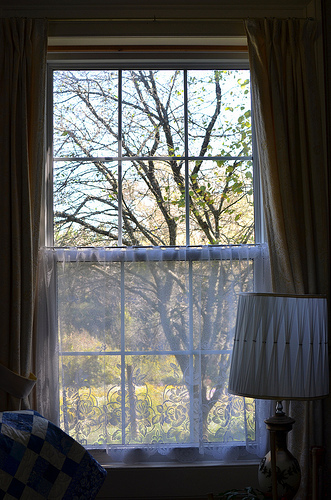Today, we are going to talk about something a bit different, fascination. Specifically, why fascination should be a quality to design into our landscapes.
Fascination is defined as the state of feeling an intense interest in something.
Fascination is a powerful force that comes in many different forms. Some forms can compulsively drive our behavior. Others can help restore our balance. Some drive us to action. Others allow us to settle into quiet.
You may be asking, What does this have to do with my garden?
Well, fascination can be designed into our daily lives through the landscape we live in.
Two Forms of Fascination
There are two main ways that fascination can come into our lives through our environment, “noisy” things and “quiet” things.
Noisy things are those that demand our attention and draw us into paying attention to them. A common example is spectator sports like football, basketball, or hockey. Another example could be a breaking news story coming across our television.
These noisy things tend to be distracting to us. By distracting, I mean it is hard to watch a football game that you are interested in and think about something else.
Quiet things can also draw our attention. An example of this could be watching out a bedroom window the first snowfall of the winter, or noticing a bird’s activity at a feeder.


Quiet things don’t demand our attention or dominate our thoughts the way noisy things do, but instead they allow our minds to experience a awareness without effort.
These are the moments my subconscious is looking for when I feel the draw of nature. Waking up in a tent to the sound of the breeze rustling through the leaves in the trees. Watching the sounds and sights of a flowing stream as it cascades over rocks. Hearing the sound of a Loon calling across a lake.
This effortless attention is usually brief, but it can be restorative to our spirits as well as our bodies.
Effortless Attention
The Attention Restoration Theory (promoted by Stephen Kaplan and others) explains that things that fascinate us quietly engage our attention in a way that does not require mental effort.
The capacity of our brain to focus on a specific thing is limited and can result in ‘directed attention fatigue’.
Directed attention is a key ingredient in human effectiveness. The fatigue of directed attention is similarly a key ingredient in ineffectiveness and human error – Stephen Kaplan (1)
By experiencing periods where we are effortlessly fascinated, our mental attention abilities have a chance rest and to regenerate. Our ability to focus therefore, is “restored”.
This somewhat “meditative” like state also gives us space to reflect. It makes it possible for us to find out what’s on our unconscious mind.
How can we promote this state?
Quiet fascination can come from both activities and also from the setting that we are in itself.
Examples of activities that can lead to this quiet fascination include gardening or fishing. I think that casting or fly fishing could be especially good at inducing this state.
Another example of an activity that seems to induce this state of effortless attention is coloring.


Yep, coloring. If you have not noticed, Adult Coloring is suddenly a huge thing. As of today, 2 of the top 10 books on Amazon are Adult coloring books. The Adult Coloring Book: ‘Stress Relieving Patterns’ is #4!
The title of that last books gives a good hint at why this is a new craze. No it’s not for you to proudly hang your artwork on the fridge on top of your children’s!
Settings can create effortless attention
While finding activities that allows us to engage in effortless attention is certainly worthwhile, creating a setting for it to occur without our constant activity may be better.
Here are just some of the quiet things that can fascinate us as we just observe in the right setting:
- The sound of rain hitting a metal roof or the surface of a lake
- A view of recently changed Autumn colors
- The sounds of and sights of a creek rushing after a rain
- Animals antics such as squirrels and birds vying for the newly filled bird feeder
- An oak trees winter silhouette against a snow covered field.
I would add that the setting we are in when we are fishing or gardening probably adds to their ability to quietly fascinated us. Perhaps bringing your coloring book out to the forest preserve might make it even more beneficial!
Creating a setting to promote quiet fascination
In garden design, we can provide or enhance settings for this fascination to regularly occur. In fact, I might argue, this should be a primary goal of the garden designer, whether professional or homeowner. Unfortunately, this is rarely the case.
We will come back to this topic many times in future posts, but here are a few simple ideas:
- Put a bird feeder outside a window that is often looked out or can be such as a kitchen where you are preparing meals.
- If you have a pond or a stream, put a bench in a spot where you can stop and notice it.
- Plant a pollinator garden where you can watch the foraging activity of the bumblebees and butterflies.
- Plant a tree that highlights the changing seasons outside a window where it can be viewed from a commonly used seat in the house.


Of course I would recommend that you get your own pair of loons!

Leave a Reply